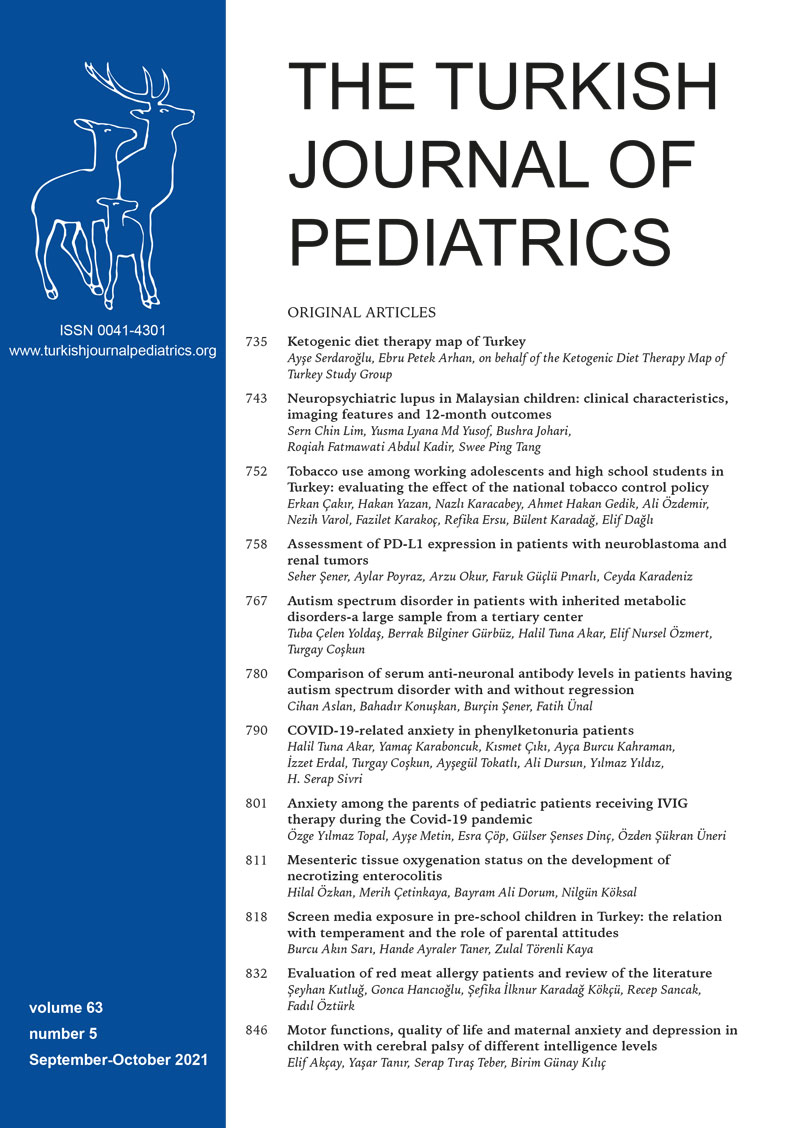Abstract
Background. Juvenile dermatomyositis associated interstitial lung disease, rarely seen in pediatric age groups, has adverse effects on survival. Anti-melanoma differentiation associated gene 5, one of the identified autoantibodies in juvenile dermatomyositis, preferentially affects the lung tissue and may cause rapidly progressive interstitial lung disease. It is a major cause of mortality in juvenile dermatomyositis. In this case report, we present a pediatric patient diagnosed with juvenile dermatomyositis without anti-melanoma differentiation associated gene 5 antibody positivity.
Case. A six-year-old male patient admitted to the Pediatric Intensive Care Unit with symptoms of respiratory failure, 1.5 months after the diagnosis of juvenile dermatomyositis. Thorax computed tomography examination revealed pneumomediastinum, a trace of left-sided pneumothorax, atelectasis on the left posterior lung region, ground-glass opacity, minimal subpleural patchy consolidation, and subcutaneous emphysema especially on the sides of the chest wall. Broad-spectrum antibiotics were started. His nasal swab sample was positive in terms of influenza B; therefore, oseltamivir was added to the treatment. Autoimmune myositis antibodies panel was examined but all of them including anti-melanoma differentiation associated gene 5 antibody resulted as negative. There was no notable reduction in lung infiltrations with the patient`s current treatment regimen. On the 12 < sup > th < /sup > day of Pediatric Intensive Care Unit admission, thorax computed tomography scan revealed progressed radiological lung findings compatible with rapidly progressive interstitial lung disease secondary to juvenile dermatomyositis. Despite intensive medical and extracorporeal treatments such as pulse steroid, intravenous immunoglobulin, methotrexate, cyclophosphamide, rituximab, therapeutic plasma exchange and, extracorporeal membrane oxygenation, the patient died on the 35 < sup > th < /sup > day.
Conclusions. Juvenile dermatomyositis patients should be carefully monitored for the development of interstitial lung disease. Rapidly progressive interstitial lung disease with a high mortality may develop shortly after diagnosis, even if the anti-melanoma differentiation associated gene 5 antibody is negative.
Keywords: anti-melanoma differentiation associated gene 5, child, interstitial lung disease, juvenile dermatomyositis, rapidly progressive interstitial lung disease













